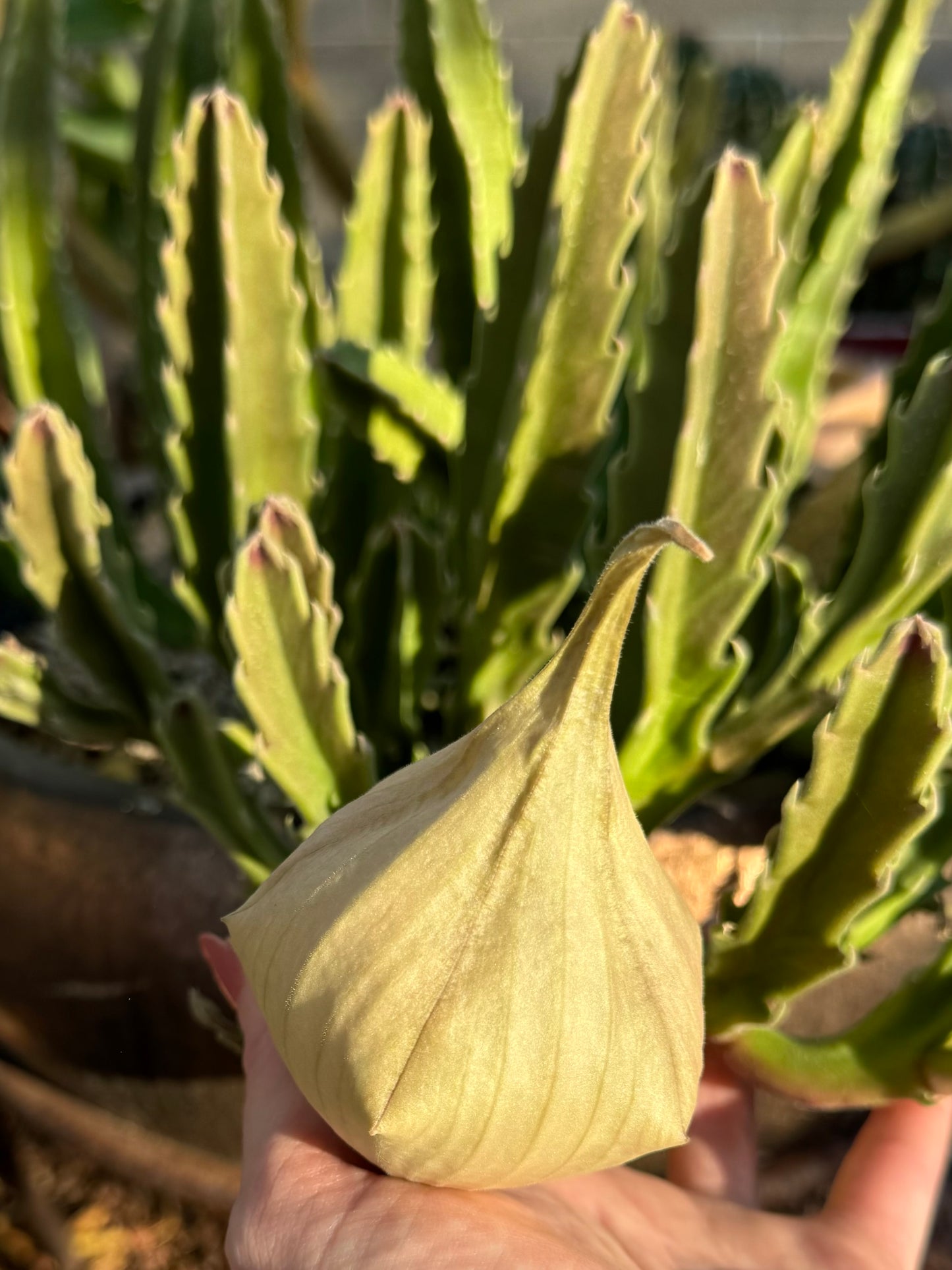⚠️ Plants cannot ship to CA, FL, HI, or US territories
Stapelia gigantea
Stapelia gigantea
Couldn't load pickup availability
Family Apocynaceae
Subfamily Asclepiadoideae
Tribe Ceropegieae
Genus Stapelia
Species gigantea
Common name(s) Carrion flower, giant star fish flower, Zulu giant
Stapelia gigantea is reputed to have the largest flower among succulents, with blooms that open wider than the average person's hand. The plant forms a balloon-like bud with a long twisted point, which peels open as a star-shape flower with long thin curled points. The petals typically stretch back behind the flower, pushing the dark maroon center forward.
Stapelia gigantea and grandiflora commonly hybridize, so you will see a lot of color and size variations for sale under the name 'gigantea.' A proper gigantea will have a large flower, though young plants can produce a few smaller "first pancake" flowers before hitting their stride.
Gigantea is pungent to match its stature, though the smell can be inconsistent. At its ripest, the flower smells like a dog has butt-scooched in crab meal. This is not really one you want to have blooming indoors—the smell will waft. Like other stapeliads it attracts flies which will leave maggots squirming in the center.
Options: You will receive a cutting from the "parent" plant pictured. Available as a rooted stem cutting measuring at least 2.5 inches or small plant (2" pot size with at least three stems), shipped bare root.
| Growth habit |
Upright, branching, will cascade over the side of pots |
| Size | Upright stems can reach 8–10", it is happy to live in a small pot and hang over edges though stems may stay smaller. |
| Light | Filtered sun, under a tree or shade cloth |
| Water | Occasional water in growing season, allow to dry between waterings; leave dry over winter |
| Overwintering | Tolerates 50°F, does best overwintering in a greenhouse |
| Flowers | Blooms late summer and fall, can have a lighter bloom in the spring |
| Scent profile |
Deep fecal rot smell reminiscent of crab meal |
| Native to |
South Africa, Zambia |
| Conservation risk status | Least Concern (LC) |






















